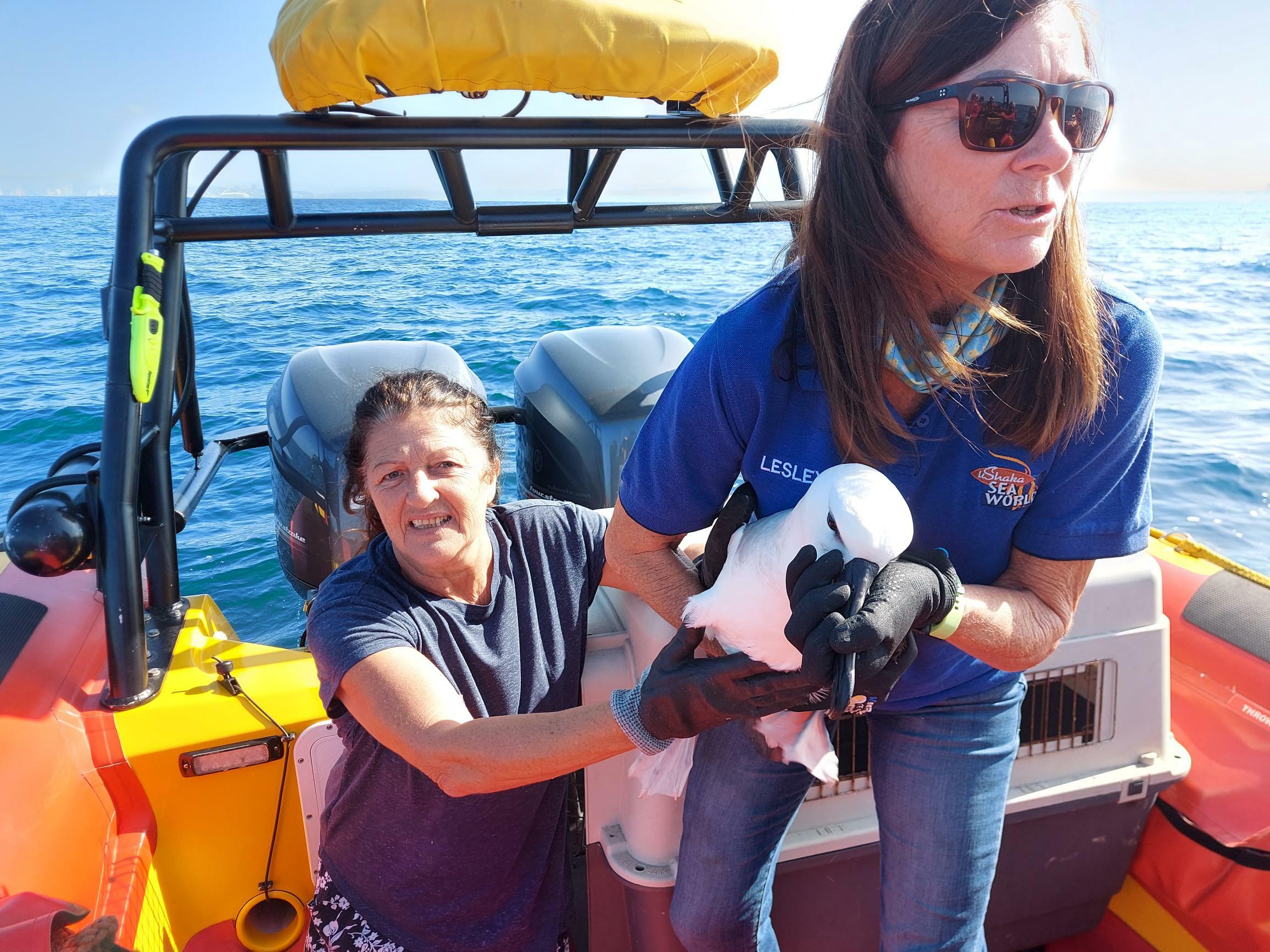On Thursday, 12 May, our NSRI Durban duty crew gathered at our NSRI Durban rescue base to prepare for an operation to assist uShaka Sea World to release a juvenile Albatross at sea.
The sea rescue craft Spirit of Surfski VI was prepared for the mission.
A juvenile Indian Yellow Nosed Albatross had landed on a motor vessel at the outer anchorage off-shore of the Port of Durban some days ago.
These majestic birds require a rather lengthy runway to get airborne and the bird, not having a long enough take-off strip on the ship, had parked itself on the ship which then, a few days later, entered the Port of Durban.
The Transnet Ports Authority pilot, that had boarded the ship at sea, to guide the ship into the Port of Durban, was informed of the animal visitor that they had onboard.
The Transnet Ports authority pilot contacted uShaka Sea World to see if they could assist.
Once the ship docked they were met by uShaka Sea World staff who safely captured the bird.
The bird, by now malnourished and weak, was rehabilitated, fed, rehydrated and prepared to be released.
This rehabilitation process took a few days.
Once the bird had regained its strength uShaka Sea World reached out to NSRI Durban to see if we would assist them with the release of the bird at sea.
The brief we got from uShaka Sea World marine scientists was to try to find other bird life at sea and to release the bird at least 5 kilometers off-shore, hopefully near to other sea bird life.
NSRI Durban duty crew, accompanied by uShaka Sea World aquarists and a volunteer, took the Indian Yellow Nosed Albatross, secured into a box, onboard our sea rescue craft Spirit of Surfski VI and we launched to go to sea.
From about 5 kilometers off-shore of the Port of Durban we searched for a while to see if we could find other sea birds around but failing to find any birds the decision was made to release the Albatross.
At a distance of 6.5 nautical miles off-shore, uShaka Sea World aquarist Lesley Labaschagne and an uShaka Sea World volunteer prepared to release the bird.
Because these animals are known to react unfavourably to bright colors, taking all efforts to assist to alleviate the bird from any stress and in the interest of taking all precautions for the wellbeing and care for the bird, Lesley and the volunteer removed their brightly colored orange life-jackets and the brightly colored yellow NSRI helmets, and while under increased safety measures taken by our NSRI crew, the bird was carefully removed from his box.
Lesley, firmly but gently handling the bird, prepared him to be released.
Everyone onboard was, as was prearranged, very still and very quiet and all that could be heard was the gentle lapping of the sea swells against the pontoons of our sea rescue craft..
We turned the sea rescue craft broadside to the wind.
In favorable sea conditions with about an 8 to 10 knot wind Lesley and the volunteer held the bird up, facing into the wind, gently throwing him up into the air in the hopes that he would catch the headwind that may have given him enough lift to take flight.
But instead of taking flight the Albatross simply and promptly landed in the water.
From a safe distance we watched him bobbing up and down on the sea swells while he appeared to take a good 15 to 20 minutes cleaning and preening himself.
Seemingly satisfied with his grooming efforts the bird faced himself into the gentle headwind and with a few steps on the water and some wing extensions he gathered momentum and took flight into the clear blue skies of Durban.
Humbled by this beautiful and majestic experience, following the successful mission to release the young bird at sea, we returned to base.

